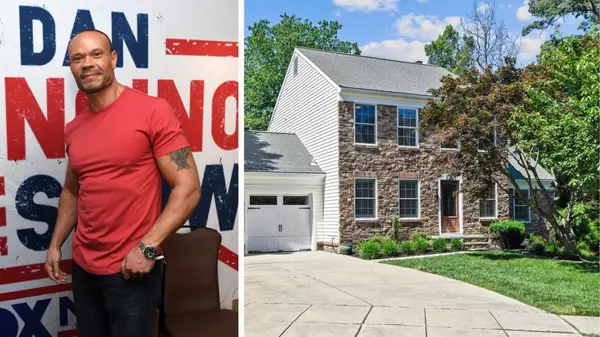Mortgage Rates Dip to 6.89% as Home Prices Finally Take a Plunge

Realtor.com; Getty Images (1)
Mortgage rates fell this week, with the average rate for a 30-year fixed home loan going from 6.95% last week to 6.89% for the week ending July 11, according to Freddie Mac.
“Following June’s jobs report, which showed a cooling labor market, the 10-year Treasury yield decreased this week, and mortgage rates followed suit,” Sam Khater, Freddie Mac’s chief economist, said in a statement.
Despite the drop, the stubbornly high interest rates over the past months have largely left the market in limbo as buyers and sellers hit the pause button.
Yet one key metric shifted for the first time in almost two months: Home prices fell 1.1 % year over year for the week ending July 6, after nine weeks of steady or rising prices.
However, this buyer-friendly good news might be short-lived.
“While this decrease might provide some relief to homebuyers, it could be a temporary shift due to Independence Day unless further data can provide persistent evidence of a new trend,” says Realtor.com® economist Jiaya Xu in her latest analysis.
Here’s a breakdown of the latest housing market data and what it means for homebuyers and sellers in our latest installment of “How’s the Housing Market This Week?”
Lower mortgage rates predicted
Though the rate has not risen above 7% for six weeks now, that number is still too high for many would-be buyers who are hanging back until rates fall even further.
However, if the economy and job market continue to improve, the Federal Reserve might decide to cut rates, causing mortgage rates to follow this downward path. (While mortgage rates are distinct from Fed rates, they tend to reflect the same patterns.)
“This means buyers may see lower mortgage rates in the second half of 2024 and be more likely to jump back into the market,” Xu explains.
Realtor.com senior economist Ralph McLaughlin agrees that mortgage rates should slowly decline throughout the rest of the year and into 2025.
“The downward trend will certainly be welcome news to homebuyers, who have been stymied by high rates and low inventory,” he says. “Falling mortgage rates should help lower monthly mortgage payments for new borrowers.”
New listings dipped
The 4th of July holiday also had a negative impact on housing stock.
After 13 consecutive weeks of increases in new listings, the number of newly listed homes sank by 4.9% for the week ending July 6 compared with the prior year.
“This week’s data revealed a sluggish housing market, with both sellers and buyers easing off due to Independence Day,” Xu says. “Fewer sellers listed new homes, and properties stayed on the market longer.”
This downturn is hopefully temporary, Xu says. “We anticipate this slowdown to be corrected in next week’s data.”
Overall, listing levels (both fresh and old) grew by 34.5% for the week ending July 6 compared with the same time last year, marking 35 weeks of growth in a row.
“Inventory is now on a strong upward trend,” says McLaughlin. “Rising inventory should help keep a check on price growth.”
While that’s certainly good news, this boost in listing levels is only half of what it was two months ago—and there are still more than 30% fewer homes for sale than before the COVID-19 pandemic.
“This means that while buyers might see more options this summer compared to last year, they will have fewer choices than were typical before 2017–19,” says Xu.
Home prices are down
While home prices are down for the week ending July 6, overall prices remain high and out of reach for many would-be buyers. (The median-priced home cost $445,000 in June.)
“While today’s homebuyers have more new options compared to a year ago, elevated mortgage rates and prices have reduced affordability and dampened purchasing interest,” says Xu.
Meanwhile, the median price per square foot grew by 3.4% in June, which means similarly sized homes are still getting more expensive.
“This continues to pose affordability challenges, especially for first-time buyers, as similar-sized homes remain more expensive than they were a year ago,” says Xu.
Homes are lingering on the market
Homes spent five extra days on the market for the week ending July 6 compared with the same time last year. (The typical home spent 45 days on the market in June.)
This marks the longest additional time on the market since August 2023, according to Xu.
The extra days might be due to the drop in new listings around Independence Day or a slowly changing housing market.
“A longer time on the market means sellers may need to be more patient, while buyers have more time to make decisions, reflecting a buyer-friendly trend,” says Xu.
Categories
Recent Posts











676 N Michigan Ave. Ste 3010, Chicago, IL, 60611, United States